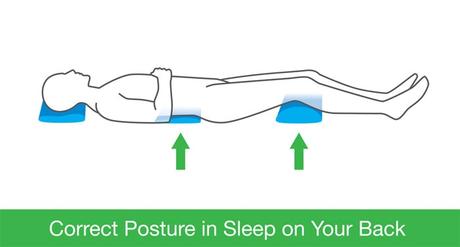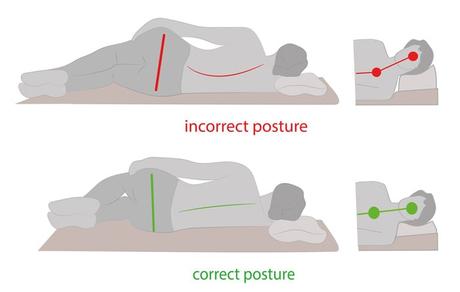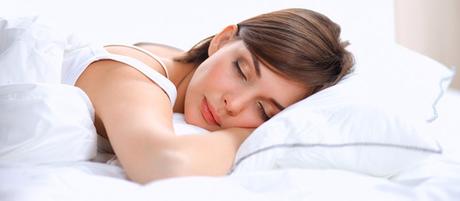How thick should a mattress be? What is the optimum mattress thickness? That's not an easy question to answer in general terms. One of the more confusing things about mattresses is their thickness. Some mattresses are just 6 inches thick while others are over 20 inches. What's the difference, and what should you buy?
A 16-inch thick mattress must be more comfortable than a 6-inch thick mattress, surely? Not necessarily, though these are extreme examples! Much depends on how heavy you are, how hard you like your mattress to be and what type of mattress you use.

Your Weight is Important to How Thick a Mattress You Need
If your weight is high, then a very soft foam mattress must be thicker than average to make sure you don't hit bottom when you lie on it. A heavyweight person will compress any mattress more than somebody several pounds lighter in weight.
It is obvious that an 18-stone man lying on his side on a soft foam mattress will need a much thicker mattress than a woman of 8 stones lying on her back on a hard mattress. For that reason, we shall discuss mattress thickness in general terms only.
Best Mattress for Aches and Pains
The thickness of your mattress may have an effect on any aches and pains you generally suffer. A lot depends on why you have these pains. If you have neck or back pain for any specific medical reason, then seek your doctor's advice. Do not buy a new mattress unless you understand how its construction, materials and thickness can affect you.
If you need a lot of support, then generally the thicker the mattress, the better it will be for you. But there are many different types of mattress. A thin memory foam mattress might be better for you than a thick innerspring mattress. Perhaps an innerspring mattress with a layer of latex foam - but how thick a layer?
Much depends on the level of support you need - and also how your sleep. A back sleeper has more body surface in contact with the mattress than a side sleeper. A belly sleeper needs a softer mattress. These are generalities, so let's have a look at each in more detail.
How Thick Should a Mattress be For Different Sleeping Positions
As stated above, people who sleep in different positions require different thickness in their mattress. That is given that each mattress is made the same! Here we take a step farther and provide an explanation for this, and how different mattress types can make a difference to how thick your mattress needs to be for optimum comfort.
Back Sleepers

Back sleepers generally need a firm mattress of around 6 to 8 inches. You need support for your buttocks and shoulders. You also need some give that allows the small of your back to sink into the mattress and receive some support. This keeps your spine in its correct alignment.
A hard latex foam with a thin (4") layer of memory foam on top would be good. Six inches of latex foam would probably be good for you, or an innerspring mattress with around 4-inches of memory foam on top. This type of mattress is usually not flippable. A flippable mattress may consist of a center 4-inch core of high-density latex, with a 3 to 4 inch layer of memory foam each side. This would create a mattress of 10" to 12" thickness.
You could purchase the same thickness of mattress with an innerspring core and a layer of foam each side: either latex foam or memory foam. The spring core would give you the support, with the memory foam as a comfort layer to also support your mid-back region. Alternatively, an 8-inch to 10-inch mattress with 4-6 inch layer of hard latex foam with 2 inches of memory foam each side would be comfortable for most back sleepers.
Side Sleepers

If you sleep on your side, then you need support for your hips and shoulders. An 8 -10 inch thick mattress would be ideal for you. Just like the previous back sleeper, you could select an 8 or 10 inch slab of foam. However, a solid foam core with a softer foam outside would be better for you.
Four inches of solid, hard foam would be ideal for you, with 2-3 inches of a softer foam, or memory foam, each side of that. Irrespective of how you distribute the layers of your mattress, a 10-inch mattress is ideal for almost any side sleeper. Some may prefer 12 inches for a flippable mattress.
Front Sleepers
Front sleepers need less support and more comfort. 10 inches is minimum - and up to 15 inches would be perfect for you. However, that depends on the type of mattress you choose! A memory foam mattress is perfect for stomach sleepers - the thicker the better! However, 10 inches is fine for most people.

If you are heavily weighted, then a few more inches would help. Some heavy front-sleepers prefer a mattress with a solid core: a high-density foam or a strong innerspring. Then on top of that, either a medium latex foam layer or memory foam.
Pregnancy: Best Sleeping Position When Pregnant
You can sleep in any position when you are pregnant. It does not harm your child if you sleep on your stomach, but you may feel uncomfortable. Sleep in the position that you feel most comfortable. You should feel fine on your stomach up to midterm, but after that, you may prefer to sleep on your side. Not for your baby's sake, but for yours! Baby is fine and has plenty protection in your womb.

How thick should a mattress be for a pregnant woman approaching midterm? The optimum mattress thickness is irrelevant - it's how you feel most comfortable. You've also got to answer the question: ' Are you going to buy a new mattress to use during your pregnancy?'
Yes, perhaps. In this case, a soft top of 4-6 inches of soft memory foam on top of a 4-6 inch medium hard latex foam base. This cannot be flipped, but it offers excellent support and comfort for a woman in mid to late pregnancy. Particularly a front sleeper.
You can sleep in any position on a mattress such as that. Maybe 4" high-density foam base and 8" of a memory foam top if you prefer to sleep on your front for as long as it feels comfortable to do so. Here is some more information on memory foam mattresses.
Memory Foam Mattresses
While you may understand what memory foam mattresses are, it's important to understand some facts:
"Amazing 12-inch Memory Foam Mattress". What does this mean? Many people will believe that they are purchasing 12 inches of memory foam.
"Oh no, you're not!"
"Oh yes, I am!"
"Oh no, you're not! And here is why!"
Your "Amazing 12-inch Memory Foam Mattress" will be 12 inches thick - or it should be. However, it's unlikely that all that 12 inches will be memory foam. You could have a 4-inch base support layer of dense latex foam. Then a 5-inch layer of innerspring and then 3 inches of memory foam, or any other combination you can think of.
You have a memory foam mattress, sure. But not all 12 inches is memory foam. It would not necessarily be a good thing to have a full 12 inches of memory foam. Most people need a solid base and then a layer of foam that you can sink into yet still supports your pressure points: shoulders, hips, and knees, but also your lower back to help prevent back pain.
How Thick Should a Mattress Be: Optimum Mattress Thickness
So, let's back to the title of this post: How Thick Should a Mattress Be: Optimum Mattress Thickness. Does this have any useful meaning? Likely not! The problem here is what materials are used to make your mattress? Springs? Foam? Memory foam? High, medium or low-density foams? Strong springs offering maximum support, connected steel coils? Continuous coils or pocketed spring coils?
To be honest, it is genuinely not possible to answer the question that is the title of this discussion. The answer depends on how many layers are involved and what these layers consist of. Also, your weight and sleeping position preferences, and any medical conditions you may have. There are so many variables that the answer could literally be different for every individual.
So, What's a Meaningful Answer? How Thick Should a Mattress Be?
Let's just conclude by stating that your mattress should be as thick as you feel comfortable with in your regular sleeping position. It should also be as thick as you are willing to pay for your mattress, although the price does not generally relate to comfort. In general terms, heavier people need more support than lighter people, and belly sleepers are best choosing a softer mattress than back sleepers.
Lie on it first. Even if you are purchasing online, try to lie on a similar type and thickness of mattress in a mall store. Then either buy it or take the details and buy it online for less. Few people get it right first time, but the learning curve is quick.
See Also: How to Choose the Right Thickness of a Mattress Topper "
How to Select a Mattress
The easiest way for you to select a mattress is to try it out. It doesn't always help because some mattresses change more than others after continual use. However, a quick test in a store gives you a rough idea.
So: How thick should a mattress be? What is the optimum mattress thickness? There is no straight answer to these questions. What you find best for yourself answers them for you, but nor for anyone else.
Keep Reading: The Standard Bed and Mattress Height from the Floor "

